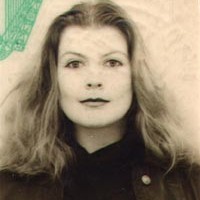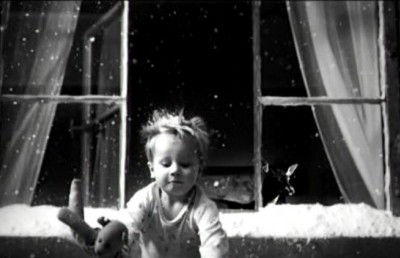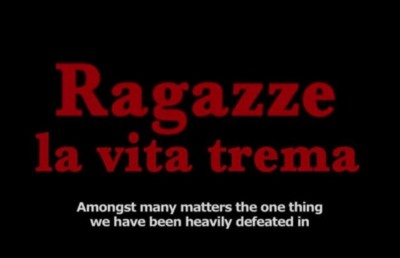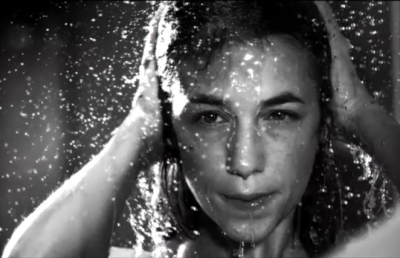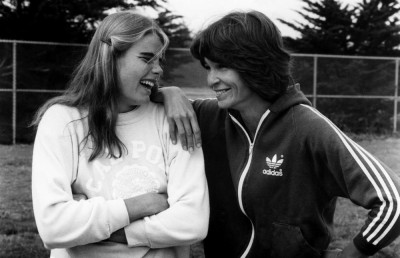Mythology and the Female Hero in Robert Towne’s Personal Best: Part 2
Issues of Character and Authorship
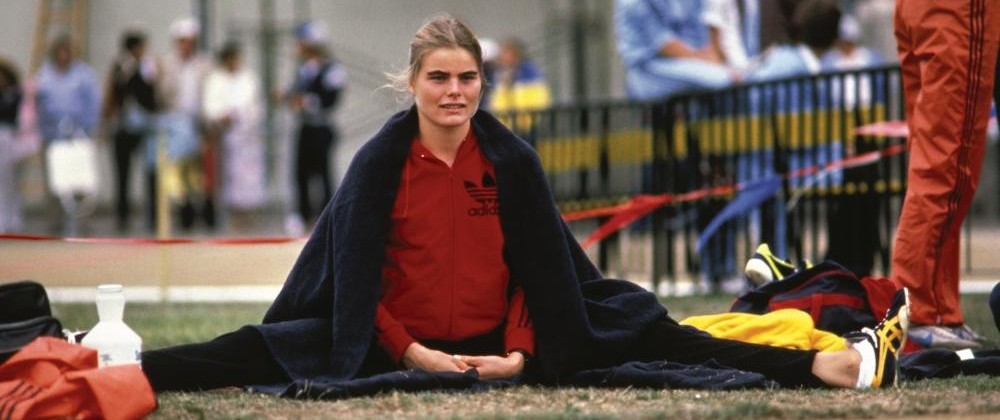

Towne’s interrogation of the female hero here is quite unique in American cinema and is further evidence of his pursuit of the mythological in screen stories. Carol Pearson and Katherine Pope question the portrayal of female characters in literary history. They posit the notion that female heroes have traditionally fallen into two categories: on the one hand there is the woman as heroine wherein she is virgin, mistress or helpmate (corresponding with Joseph Campbell’s goddess, temptress or earth mother – someone who is part of the male journey but does not exist as a whole person). On the other hand, however, Pearson and Pope claim that there is place for a female hero, along the lines of tradition male heroes: they categorise her as sage, artist or warrior and she becomes the primary character in her own story. [1]
In Pearson’s The Hero Within: Six Archetypes We Live By, the author extends the analogy as a useful metaphor by which to understand female development. In taking the archetypes (usually understood as male) of Innocent, Orphan, Martyr, Wanderer, Warrior and Magician, she creates a gallery of portraits representative of character qualities and stages of personal evolution. This is a hero’s journey parallel to that posited by Carl Jung, a journey of individuation, in which the archetypes manifested in our daily lives help define and expand the ego’s boundaries. [2] At the centre of this idea is the individual, who at various stages of personal development exhibits some of the tendencies described above, and ideally, ‘ascends’ to the stage of Magician when her journey is completed. This implies a return to a state of innocence, but the journey brings with it lessons, which, when learned and absorbed, transform the hero into a wise and loving individual.
In simple screenwriting terms, this gives us a way in which to understand the transformation of character in Towne’s classical interpretation: the circular journey of a hero from Innocent to Magician provides a benchmark of psychological accuracy by which to measure that arc which in an ideal fictional work guides the reader or viewer to a deeper understanding of story.
The author summarises the journey (or the effect of the understanding that such a model provides) as follows:
As we become more and more who we are and hence link up with whom we feel a deep connection, we have more, and satisfying, intimacy with others. The reward for the hero’s inevitably solitary journey, then is community – community with the self, with other people, and with the natural and spiritual worlds. At the end of the journey, the hero feels and is at home in the world. [3]
Towne’s characters frequently take circular journeys: in The Last Detail (1973) he altered the ending so that Bad Ass would end up back where he started; similarly, in Shampoo George Roundy’s name signifies his particular character’s destination; and in Chinatown Jake is right back where he started. The particular journey taken by the heroines in Personal Best is strikingly different from the way athletic women were portrayed in Hollywood in the 1930s and 1940s – Sonja Henie and Esther Williams were not placed in competitive narratives and remained essentially non-threatening (as well as heterosexual.) In the 1950s, Katharine Hepburn would play opposite Spencer Tracy in the Gordon and Kanin comedy Pat and Mike (1952), with the inevitable promise that he would ‘straighten’ her out. The Sixties would see only one female athlete’s story on film, in Billie (1965). [4] Ultimately, all of these models involve what Aristotle termed ‘recognition’, or the realisation of one’s true nature: in an extension to this dramatic idea, Towne takes it further – and not for the first time in his work, Chinatown being another example – insofar as ‘recognition’ comes in Personal Best it is in the form of Chris finally seeing other people’s true nature. In this case, Chris realises that Tory is mortally jealous of her achievements and therefore she can never be her equal. Waking up to this realisation completes the second act of Personal Best. [5]
Integrating both models as paradigm, Pearson’s and Murdock’s, the character arc of Chris Cahill can be described as follows:
1. Chris begins as Innocent but is quickly initiated as
2. Orphan when she moves away from home and is ‘adopted’ by the older, lesbian pentathlete Tory Skinner.
3. Chris’s Martyr phase allows her to commit to her relationship with Tory and she is encouraged to be a part of a team under the tutelage of Terry Tingloff (Scott Glenn.)
4. Chris and Tory are both jealous of each other’s attractiveness to men and the jealousy manifests in the ‘unconscious’ damage to Chris’ hopes when Tory advises her to attack the high jump differently. Under the influence of Denny, with whom Chris becomes intimate, Chris begins to find herself. This could be said to encompass the Wanderer phase of her development.
5. Chris then becomes a Warrior, battling for self-definition on and off the track.
6. When Chris meets Denny Stites, the former Olympic medal winner he inducts her into the world of both heterosexuality and the philosophy of ‘??Personal Best??’. It is now that Chris enters the Magician stage of her individuation and is able to sacrifice her own Gold medal chances in order to allow Tory to compete as an equal at the Moscow Olympics –which they cannot in any case attend. [6]
As Pearson asserts, we occupy what might be termed a ‘Warrior culture,’ in which “the hero/villain/victim myth informs our culture’s basic secular belief system. The ritual that underlies the Warrior myths is found, of course, in war, but it also is played out culturally in our sports, our business practices, our religions, and even our economic and educational theories. In the realm of sports, we have seen over the centuries a progression from gladiatorial contests in which the loser actually was killed, to football, baseball, or soccer, in which the antagonist simply loses.” [7] Thus, we could read the leading characters in Personal Best slightly differently if we see Tory as oscillating between the roles of hero, villain and victim, in that order, throughout the unfolding story. Murdock describes a woman’s descent to the Goddess (often described as depression in medical terms) as the beginning of her deep need to reconnect with the feminine – we could read Chris’s relationship with Tory as a necessary precursor to her role as girlfriend to Denny. [8]
Using Murdock’s model, we can read those periods of injury to Chris as an emotional and psychological opportunity to revise her goals. That she ultimately chooses heterosexuality over lesbianism is partly a reaction to Tory’s opportunistic sabotaging of her career but can also be read as a realisation that she can thrive better with a man as her romantic partner. This fits into Murdock’s reworking of the traditional model. [9]
CHRIS
I watched your long jump – great, tremendous height. I love that feeling, flying thru the air, that’s the way I started, the long jump ..
TORY
Yeah?
CHRIS
Yeah, anyway, congratulations.
Tory looks at her, touched both by the sincerity of the compliment and Chris’ try for composure.
TORY
Thank you. I was into it and –some days you get lucky and, aww fuck, I’m so sorry –
She reaches out and touches her shoulder lightly. Chris nods and then bows her head and abruptly begins to shake with sobs – silently at first.
TORY
(continuing; matter of fact)
Hey, let go – it’s got to come out sometime.
Chris’ sobs become audible and wracking. Tory starts to reach to her, thinks better of it, sits back and stares out the front window.
(Personal Best: 12)
Chris then occupies the more conventional role of the hero, with Tory alternately playing Mentor, Villain and Victim as Chris learns to assert herself and (literally) raise the bar, forcing Tory to acknowledge her superiority, but using her own generosity of spirit to allow Tory to reclaim her former glory as an athletics star. [10]
Ironically, then, in Personal Best it is the lesbian relationship which initially helps Chris to progress but then stifles her, seemingly in an accident but probably intentionally as Tory changes Chris’ work pattern in her strongest event. Tory then becomes the stereotypical ‘husband,’ jealous of the wife’s success and keen to keep her in the domestic environment, far from any opportunity for outshining him in the workplace. Towne’s screenplay keeps Chris on a constant journey of change, conflict and self-knowledge deeply rooted in this mythological foundation, reflecting on his classical education but also on the mundanity of an unequal relationship. As Egri reminds us,
Constant change is the very essence of all existence. Everything in time passes into its opposite. Everything within itself contains its own opposite. Change is a force which impels it to move , and this very movement becomes something different from what it was. [11]
Towne’s focus on change prepares us for Chris’ transitions, both personal and professional, which are always intertwined and interdependent. The strength of the screenplay lies in its powerful depiction of independent-minded characters whose ultimate conflict is inescapable:
The real unity of opposites is one in which compromise is impossible. [12]
Initially, Tory is Chris’ greatest supporter, encouraging her when she is feeling down about her potential as an athlete:
TORY
You can be great.
Chris’ eyes grow moist.
CHRIS
You really believe that?
TORY
(quiet conviction)
I know it.
(Personal Best: 22)
We could, then, also interpret Tory as a Shapeshifter,
… the person who starts out as the hero’s love interest shifts shape so far that she becomes the Shadow, bent on the hero’s destruction. [13]
Towne is famous for the creation of morally ambiguous characters; Tory’s mutability fits into that model, as well as mirroring the script’s classical structure of circularity – and the shape of the track itself. Tory’s jealousy of Chris’ achievements (the student overtaking the mentor) leads to conflict approximately 70 minutes into the film and immediately precedes the event that leads to the severing of the relationship:
TORY
There’s only one thing left to do. See other people.
CHRIS
I just – need you.
Towne’s reputation has largely been created on the basis of his powerful, truthful dialogue. As David Denby says, Towne “writes just about the best realistic dialogue in modern movies.” [14] Chris’ stating of her need is more acceptable in a female than a male character. This particular exchange is part of what is arguably the biggest emotional scene in the film and is not in the screenplay. The incident which irrevocably alters the relationship between Chris and Tory occurs on page 100 of the screenplay (and around 75 minutes in to the film):
TORY
Don’t do me any favors.
CHRIS
(taking her arm)
I said I’ll try it.
TORY
So try it.
She disengages her arm and walks off. Chris is upset. She turns and moves to the forward tape, not noticing that it in fact was Tory’s mark – not hers. She concentrates for a moment, and takes off in the bounding three step move, but the final step is much farther away from her take off point than she realized. She almost leaps to reach it, hits the take off and collapses screaming to the ground.
TORY
Walking away, turns back to see Chris jackknifed in agony. She hurries to her.
(Personal Best: 100)
This leads to the most conflicted and hurt dialogue between Chris and Tory.
TORY
(to Chris)
I wish it had been me ..
(she takes Chris’ hand)
-could you look at me at least?
Chris looks up, stares blankly at Tory. Then withdraws her hand – ostensibly to adjust the bag under her knee. Tory’s having a hard time controlling her growing desperation.
TORY
You know I’d do anything to avoid hurting you.
(silence from Chris)
..all I’ve ever tried, I mean I was trying, I was trying to ..help.
(more silence)
Dammit, don’t play the dumb Indian with me. Say something.
(lowers her voice, pleading)
Don’t let them do this to us! [15]
CHRIS
(looks up slowly)
Do what? What’s he doing?
TORY
What did I do? C’mon, spit it out for once in your life. Did I hurt you on purpose?
CHRIS
Take your hands off me. [16]
TORY
Did I? did I? did I? did I? did I? did I? You’re so fucking gutless. Do you have a fucking thought in your fucking head?
CHRIS
- my thought is that at this point off we’re both better off with a dumb Indian.
(Personal Best: 103)
(It is notable that the significant conversation between Chris and Denny –allegedly an alter ego for Towne himself– about her past relationship with Tory is also altered from the exchange delineated on pp. 134-5 of the screenplay.) For Towne, conflict is the centre of all drama, emphasising his classical style:
… that involves some sort of conflict and that creates compression all by itself. Just the use of conflict. [17]
In Personal Best the stakes are constantly raised through action and dialogue as the conflict between Christ and Tory escalates. Finally, it is Chris who demonstrates the more courageous character – she stands up to Tingloff, reconciles with Tory, and has an equal relationship with Denny Stites, whose requisite awe at her athleticism is (perhaps unfortunately…) expressed in the ‘crotch’ shots which earned Towne such criticism. [18] Their first encounter at the Cal Poly pool is however one of cinema’s great ‘meeting cute’ scenes and based on one of Towne’s own real-life encounters:
After a few strokes, Chris’ body can be seen under the water’s surface coming up on Denny’s left – kicking and stretched out, it is spectacular. The GOGGLES stop moving from air to water and remain IN THE WATER, holding on Chris’ legs and upper body. As the GOGGLES move past they remain underwater looking BACKWARD toward Chris, until there is a sudden JOLT.
DENNY
has crashed into the wall. He surfaces, shakes his head, and grabs the gutter.
CHRIS
approaches, kicking. She’s seen him hit the wall but has no idea why.
CHRIS
- you all right?
DENNY
What? Yeah, fine.
CHRIS
(reaching the wall)
- fog’s amazing.
DENNY
(more stunned by her than anything else)
- really
CHRIS
-well, be careful.
She pushes off and kicks back down the pool. Denny some-what reflectively cleans his goggles and watches her go.
(Personal Best: 114)
This meeting happens when Chris has finally become who she really is, according to the tenets of the mythological model. Murdock says that,
The heroine must have the courage to demythologise her partner and take back responsibility for her own life. She must make hard decisions and earn her autonomy. When a woman is liberated or liberates herself from the belief that her fulfilment comes at the hands of a man, then she can find a partner who is an equal and enjoy true romantic love. [19]
Thus, the screenplay for Personal Best, far from utilising the seemingly radical lesbian relationship at its heart to critique contemporary culture or even sporting cliché, could be interpreted as falling into the traditional storytelling model, which Vogler maintains is the most emotionally rewarding for audiences and financially rewarding for studios. However, most radical of all, perhaps, is the idea that the screenplay suggests and forms its organising paradigm: even lesbians are human and suffer from professional jealousy, and sometimes women really can thrive in more conventional, heterosexual relationships if their male partner truly enables them to undertake their personal journeys. [20] That is the underlying message of Personal Best.
Character and AuthorshipThe relationship between Tory and Chris could also be read as that of Mentor/Student, a Towne trope, which becomes threatening to the Mentor when the Student’s true (and greater) talents are revealed. Structurally this is reflected when Tory injures herself in the long jump (Chris’ former Personal Best sport prior to the high jump, which had been Tory’s) and their roles are reversed – as well as perhaps a form of poetic justice taking precedence. However when Chris visits her, instead of being bitter, Tory advises her as to how she should play the 800 meters. They achieve closure on the winners’ stand, when, Chris wearing red, and Tory wearing blue, Tory expresses her reaction to Denny:
CHRIS
- what do you think?
Tory tries to say something everything – then nods to the stands where Denny is.
TORY
- well – he’s awful cute … [21]
CHRIS
(delighted, manages a nod)
… I know!… [22]
(Personal Best: 168)
Terry Tingloff and Denny Stites also play the role of Mentor to Chris in this new Oedipal drama: atonement with the father in Personal Best is sublimated for Chris through her relationships with these men. This structure is a powerful motif in Towne’s oeuvre and can be seen in his later screenplay, Days of Thunder (1990), which might be seen as a dry run for, or even a first draft of, the later film, the Steve Prefontaine biography, Without Limits (1998), which he would direct himself, from a screenplay by himself and journalist Kenny Moore (playing Denny here), who was one of Prefontaine’s teammates. Without Limits contains perhaps Towne’s most balanced relationship between athlete and mentor.
Vogler states that mentor-hero relationships can be marred by conflict, as is the case in Personal Best. [23]
This is one way of interpreting the structure of the breakdown of Chris and Tory’s relationship when Tory advises Chris to lengthen her pace on the approach to the long jump. However, the film’s actual coach/mentor, Tingloff, turns out to be a ‘bad coach’ – in contrast with the benign Bill Bowerman in Without Limits. [24]
The film still offers other facets of Towne’s characteristic screenwriting, for instance his penchant for ‘off-colour’ jokes:
Tingloff looks up, smiles.
TINGLOFF
You know what you’re like? There’s a joke about a faggot who makes a pass at a Marine in the men’s room on the fortieth floor of the Empire State building. The marine throws the faggot out the window. When he gets down to the street, the marine passes this faggot in the gutter who struggles to one elbow and says, ‘Yoo-hoo … I’m not mad.’ Just go home and kiss and make up or eat each other or whatever you do, will you? Ah, I think I actually made you mad. Then why don’t you hit me? It would be nice to see you have the balls to hurt somebody. Go ahead, hit me.
(Personal Best: 110)
Towne is defensive against criticism of the running footage: “It’s not athletic footage, damn it… it’s drama, it’s part of their lives. It’s a war not between genders, but between how you love someone and how you serve yourself. That’s an inherently schizophrenic conflict. The answer is in the title. There is an inner standard. You just have to learn to accept it.” [25]
The Project of Authorship and Personal BestPart of the project of cinematic authorship, certainly insofar as it has traditionally been mooted, is finding those traces of a director from film to film which establish his trademarks, a dominant vision, if you will. [26] Towne as director is confident that as a writer he is expert at scene construction, and the building of scene sequences, a tool intrinsic to his craft. In terms of narrative skill, then, he puts the dramatic emphasis on mythic elements in Personal Best, allowing them to be offset by humour as counterpoint, with the (father) mentor/student relationship a major structuring dramatic component which would form the basis of Days of Thunder, and Without Limits. [27]
His directing technique is certainly aided by the years watching Hal Ashby up close: he likes to frame wide shots, allowing scenes to happen within their own space and without too many cuts. He allows actors great freedom yet due to the action sections he is not afraid of utilising the traditional aspects of the sports director’s battery, perfected in years of television coverage and extended in documentary features such as Tokyo Olympiad (1965) and Visions of Eight (1973): quick cuts, slow motion, cutting on action; lyrical and comic interludes; as well as auditory effects such as heartbeats and heavy breathing.
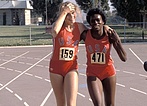
Most surprising of all perhaps is the occasional abstract cut, for instance in the very opening shot of Personal Best, when the viewer is assaulted with the alien sounds of an athletics track, accompanied by enormous close-up images of huge droplets hitting the ground. It isn’t until the camera abruptly pulls back that it is possible to interpret the setting. Likewise, later, when Tory and Chris are running in the dunes, it is in long shot against the white sands so that it appears the women are running to stand still. Such moments turn the meaning of the film into something other than the sum of its parts, perhaps attempting to attain a gloss on Chris’s Native American heritage where the concept of time is strikingly different than that of the white man’s tradition. Ultimately, Personal Best can be appreciated as a lucid and sensual male celebration of women’s physiques. Towne was particularly proud of his technical achievements on the film and said of the sound effects in the shower room when Tory nurses Chris during her bout of food poisoning.
That sound is more evocative than anything I could have written… I’m a great believer in written dialogue, but what I see and what I hear I have come to realize increasingly is more important than any line of dialogue. It shows the limitations of the written word. It’s not a palpable thing – it’s an idea.. [28]
So Towne was not just balancing the terms of internal authorship in the screenplay itself; he was adjusting his creative skills in terms of the final, finished product – the interpreting of his writing into moving pictures. Overall, as his critics claimed, Towne was now writing palpably softer material, with compromised endings – because these were the stuff of life itself.
He commented on the experience of making the film:
I don’t think anybody has control in a movie. The one thing that you know when you are finally in that position – I had final cut and I was the writer and, out of necessity, became the producer and director – is that moment when you theoretically have control is the moment when you realize that you have no control. Anything can happen. Control is a loose term. Intention, now that’s a different matter. What always surprises you is that no matter how carefully you write something, if you are not in constant communication with the director, the number of ways in which every single moment and every single shot can be misinterpreted is just amazing. [29]
In many ways, this statement summarises the concerns of the writer-director in terms of authorship. While on the one hand Towne was always accepting of the limitations (and potential) of collaborative filmmaking, he was now realising the somewhat mixed benefits of at least nominally being seen as the presumed controlling artistic intelligence behind a production. He is also acknowledging here the advantage of having a good relationship with a director – the better to interpret his intention as screenwriter. [30] However the conflating of internal and external authorship had come at the price of Greystoke, lost to David Geffen in order to complete Personal Best, a loss which would forever underscore his writing and, perhaps, his view of the world.
Endnotes
1 Carol Pearson and Katherine Pope. Who am I This Time? Female Portraits in American and British Literature. New York: McGraw-Hill Co, 1976.
2 Pearson describes the stages as follows: “Each of the archetypes carries with it a worldview, and with that different life goals and theories about what gives life meaning. Orphans seek safety and fear exploitation and abandonment. Martyrs want to be good, and see the world as a conflict between good (care and responsibility) and bad (selfishness and exploitation.) Wanderers want independence and fear conformity. Warriors strive to be strong, to have an impact upon the world, and to avoid ineffectiveness and passivity. Magicians aim to be true to their inner wisdom and to be in balance with the energies of the universe. Conversely, they try to avoid the inauthentic and the superficial.” Carol Pearson. The Hero Within: Six Archetypes We Live By. San Francisco: Harper and Row, 1986, 4-5.
3 Pearson. Op.cit., 153. Maureen Murdock defines the heroine’s journey in terms of a redefining of the heroic (male) quest – creating balance by integrating the masculine and feminine aspects of our nature. The ultimate boon is the reclaiming of the Goddess – a projection of the female principle, that needs restoring to our culture. This model also entails the three components of the hero’s circular journey – Separation, Initiation and Return; Maureen Murdock. The Heroine’s Journey: Woman’s Quest for Wholeness. Boston: Shambhala Publications, 1990, 69.
4 Information courtesy of Demetrius W. Pearson, ‘The Depiction and Characterization of Women in Sport Films,’ in Women in Sport and Physical Activity Journal, V.10; N.1, 31 March 2001: 103. Article copyright Women of Diversity Productions, Inc. Database copyright. © SoftLine Information, Inc. 2001. Accessed online.
5 In terms of what Dancyger and Rush delineate as the restorative screenplay structure in American cinema, Act One takes the form of transgression, while Act Three takes that of Redemption. Ken Dancyger and Jeff Rush. Op. cit., 33.
6 The website Managing Creativity, in its guide to writing a screenplay using the tenets of the hero’s journey, offers this advice: “ a) Once you know the apotheosis – the seminal insight the hero has – then you can build your story up to and beyond that point. Knowing the hero’s apotheosis allows you to decide what the hero’s restrictions will be and how to overcome them (atonement with the father). Knowing the hero’s apotheosis allows you to decide the hero’s inner resolve and actions upon the enlightenment (ultimate boon).”
7 Pearson. Op.cit., 77.
8 Murdock. Op.cit., 69.
9 She asserts that “Women have to find autonomy before they can achieve wholeness. Examining the meaning of autonomy often involves discarding old ideas of success… The rewards of the outer journey can be seductive, but at some point the heroine awakens and says no to the heroics of the ego. They have come at too high a price.” Murdock. Op. cit., 69.
10 We could also read Personal Best as a gloss on fairytales (no pun intended) – with Chris as Cinderella or Beauty, Tory as Ugly Sister, and Denny Stites as Prince Charming/Beast who approaches not in a chariot but on an athletics team.
11 Egri. Op. cit., 50.
12 Egri. Op. cit., 119.
13 Vogler. Op. cit., 85.
14 David Denby, ‘Rear Window: Delivering His Personal Best,’ in Premiere, December 1988: 78. Aristotle’s view of dialogue’s power lies in its revelation of character: “What a personage says or does reveals a certain moral purpose; and a good element of character, if the purpose so revealed is good. Such goodness is possible in every type of personage, even in a woman.” Aristotle: The Art of Poetry, Tr. Ingram Bywater, 55.
15 In the film she actually says “Don’t let himdo this to us,” meaning Coach Tingloff.
16 This line is dropped in the film.
17 Speaking at the AFI’s Harold Lloyd Master Seminar in 1994.
18 Pauline Kael says however, that “Towne’s cameras make love to women… [they] never ogle the women’s bodies.” She calls it “one of the best dating movies of all time.” ‘The Man Who Understands Women,’ 112, 118; 119. A rebel lesbian reading yields a different interpretation: “… as the sheer beauty and grace of women in air, laid out maybe, but not laid back…” Theresa Catalano, ‘Personal Best: A Critique of the Movie,’ Women and Therapy, 2.4, Winter 1982: 88; quoted in Holmlund. Op.cit., 155, 164.
19 Murdock. Op.cit., 60.
20 Crucially, of course, Denny will never compete with Chris so their relationship will always be a level playing field. Christopher Vogler, The Hero’s Journey: Mythic Structure for Storytellers & Screenwriters. Studio City, California: Michael Wiese Productions, 1992.
21 “…for a guy!” is added onscreen.
22 The change to the then-familiar vernacular, “Are you shittin’ ‘me?” may have been improvised by the actress.
23 Vogler, Op. cit.,142.
24 Entire stories, such as Goodbye, Mr. Chips (1939), can be built around the idea of the Mentor as Hero; whereas the Mentor can also be portrayed as an Evolved Hero – someone who has enough experience to teach others – as Vogler points out, “Mentors spring up in amazing variety and frequency because they are so useful to storytellers. They reflect the reality that we all have to learn the lessons of life from someone or something. Whether embodied as a person, a tradition, or a code of ethics, the energy of the archetype is present in almost every story, to get things rolling with gifts, encouragement, guidance, or wisdom.” Vogler. Op.cit., 144.
25 Ibid.
26 Robin Wood describes this recurrence of theme and attitude in terms of Hawks’ work: “The films are linked by the whole structure of their scenarios, by the pattern of the character relationships, and by passages of closely similar (at moments near-identical) dialogue.” Wood, ‘To Have (Written) and Have Not (Directed),’ in Bill Nichols, Bill (ed.). Movies and Methods: An Anthology: Volume I. Berkeley, California: University of California Press, 1982, 300.
27 In Chinatown Towne had offset genre against myth, a tool he had skilfully adapted from his work as Special Consultant, i.e. rewriter, on Bonnie and Clyde.
28 Pollock, 1982: as before. David Thomson says of Personal Best, “No one could say it was as sharp as Robert’s best scripts – it was sweeter, but less alive. It did moon just a bit over the lady athletes, as if a naturalist were celebrating gorgeous animal bodies. The eye loved it, but the talk was tame; and Robert has never been as good on women as he is with dry, potent men who sniff sex and challenge in the air.” Thomson, ‘Trouble in Chinatown,’ Vanity Fair, November 1985: 125.
29 Towne, ‘On Directing,’ as before, 127-128.
30 This is perhaps why the films of Paddy Chayefsky’s work rarely expressed the powerful writing behind them.

